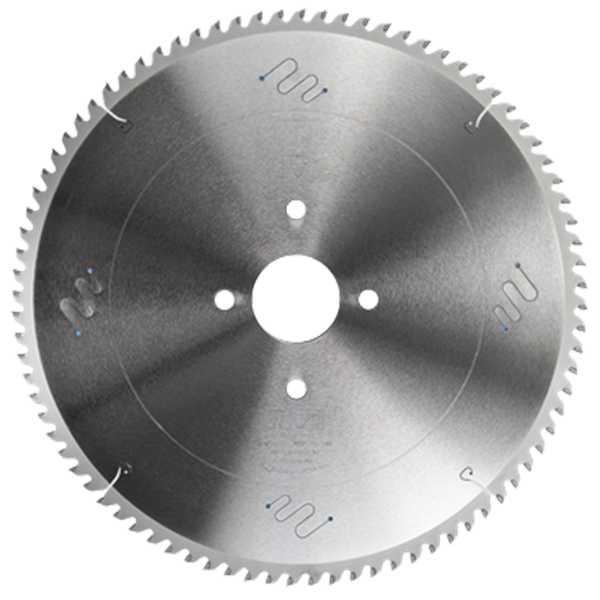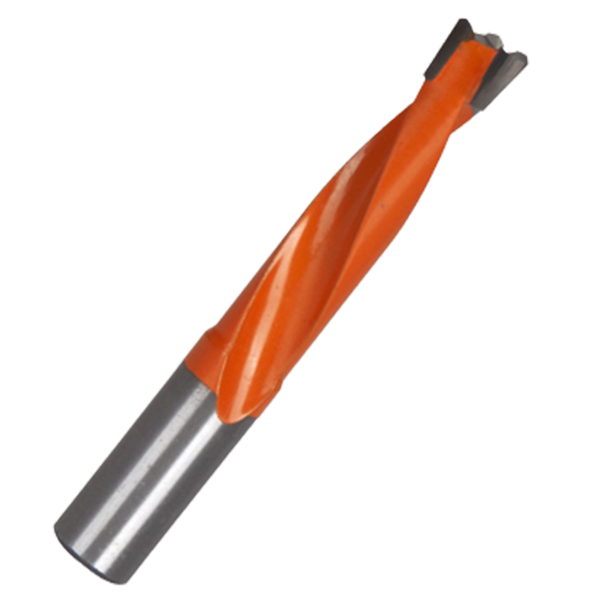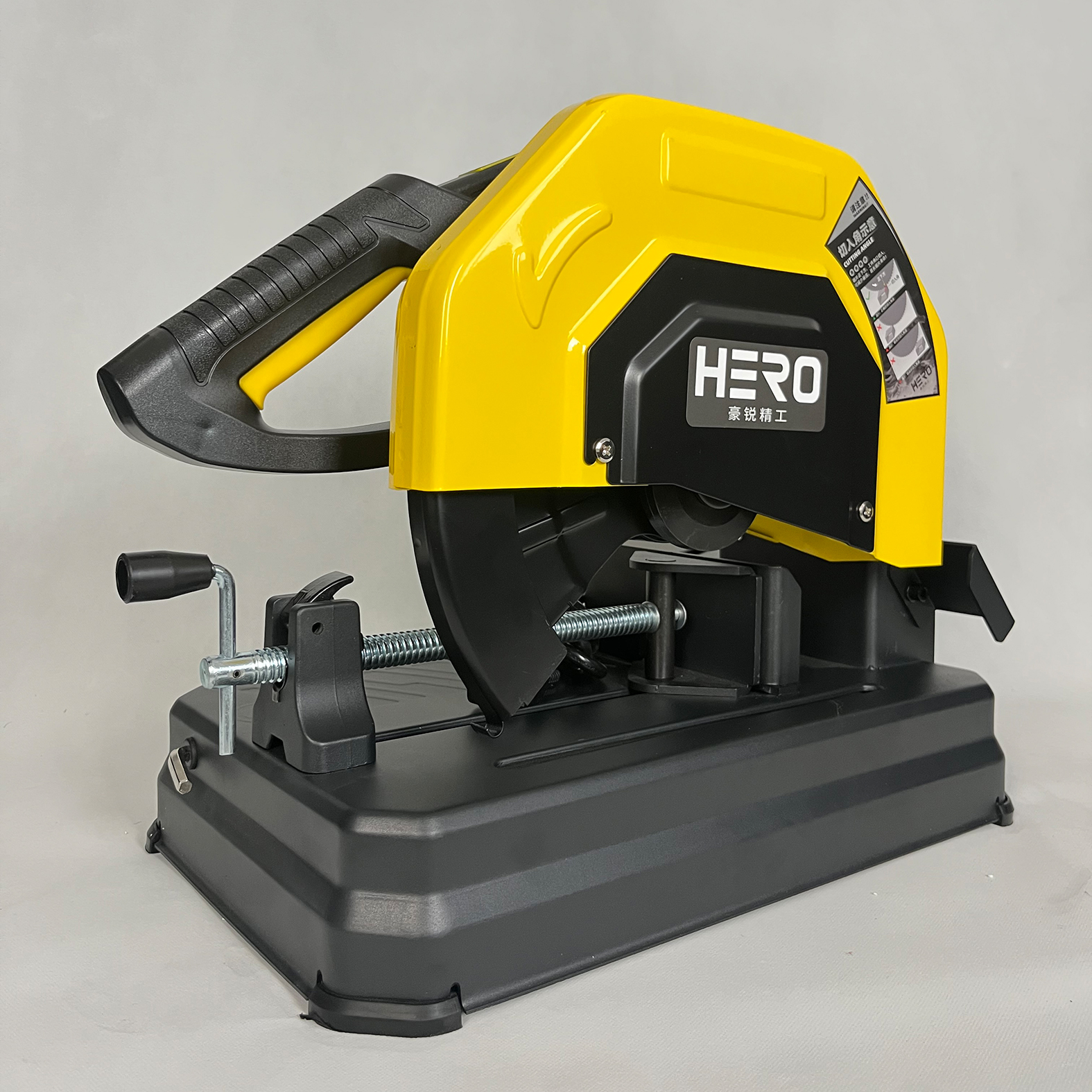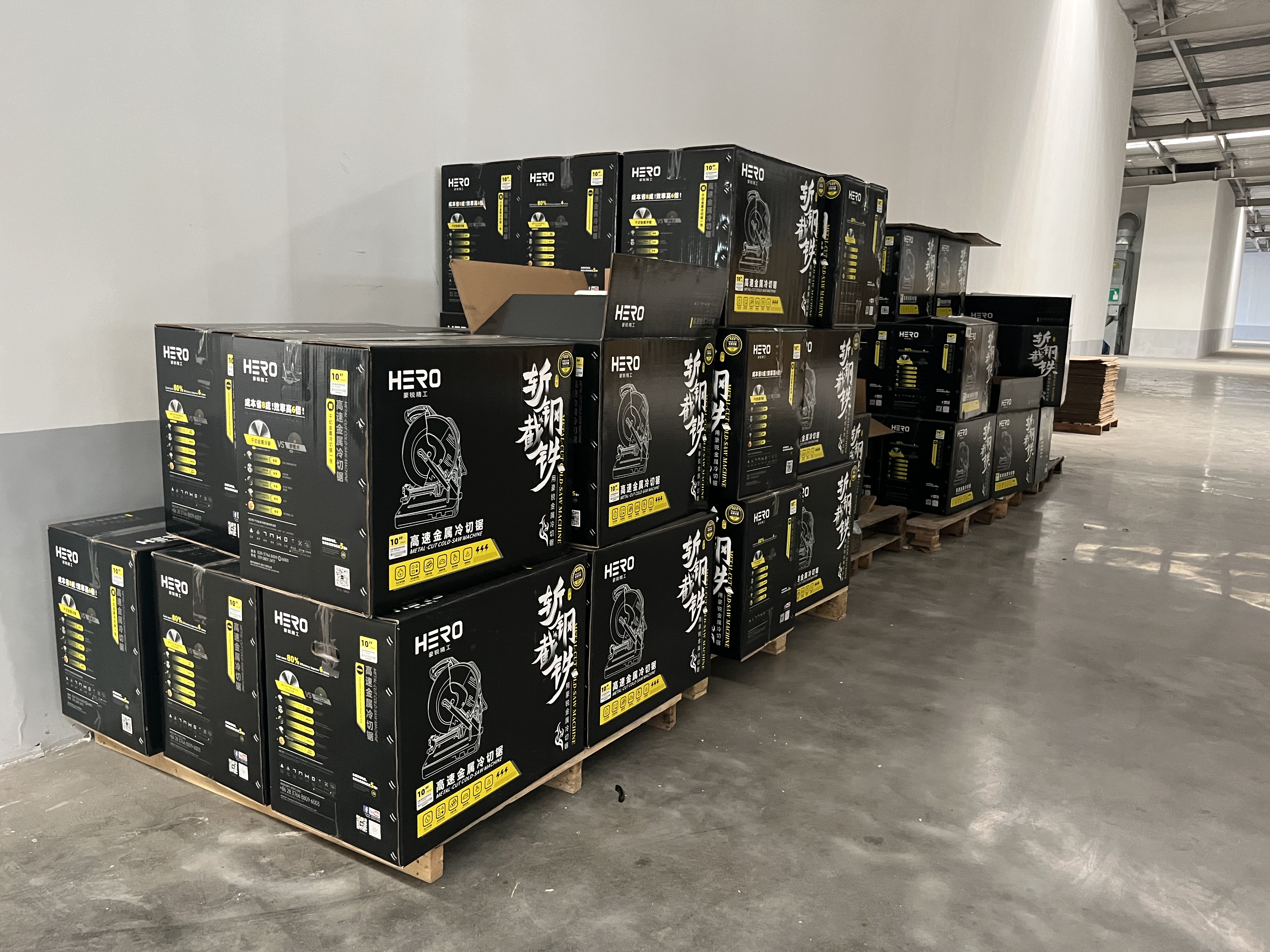What is Dry-Cutting for Metal?
Understanding Circular Metal Saws
As the name implies, a circular metal saw uses disk-shaped blades to cut materials. This type of saw is ideal for cutting metal because its design allows it to consistently deliver precise cuts. Additionally, the circular motion of the blade creates a continuous cutting action, enabling it to cut through ferrous and non-ferrous metals.Dry-cutting is a method of cutting through metal without using a coolant liquid. Instead of using a liquid to reduce heat and friction, dry-cutting relies on blades that are either made out of or covered in, a material that can withstand the heat and friction the metal creates. Usually, diamond blades are used for dry cutting due to their hardness and durability.
The circular saw blades used for some metal sawing will generate a lot of heat when cutting round steel, aluminum and other special materials; but sometimes it is necessary to keep the sawed workpiece and saw blade cool. In this case, a special The circular saw blade of the material blade completes the sawing, which is a cold saw.
The secret to cold sawing’s ability to keep the workpiece and saw blade cool is the special cutter head: a cermet cutter head.
Cermet cutter heads maintain the characteristics of ceramics such as high hardness, high strength, wear resistance, high temperature resistance, oxidation resistance and chemical stability, and have good metal toughness and plasticity. Cermet has the advantages of both metal and ceramic. It has low density, high hardness, wear resistance and good thermal conductivity. It will not be brittle due to sudden cooling or heating. During cutting, the serrations of the ceramic cutter head will conduct heat to chips, thus keeping the saw blade and cutting material cool.
Cold Sawing Advantages
Cold saws can be used for cutting many different shapes, including rods, tubes, and extrusions. Automated, enclosed circular cold saws work well for production runs and repetitive projects where tolerance and finish are important. These machines offer variable blade speed and adjustable feed rates for high-speed production and burr-free, accurate cuts.Cold saws are capable of machining most ferrous and non-ferrous alloys. Additional advantages include minimal burr production, fewer sparks, less discoloration and no dust.
The cold sawing process is capable of high throughput on larger and heavier metals — in certain circumstances, even as tight as ±0.005” (0.127 mm) tolerance. Cold saws can be used for cutoff of both ferrous and non-ferrous metals, and for both straight and angled cuts. For example, common grades of steel lend themselves to cold sawing, and can be cut quickly without generating a lot of heat and friction.
Some Downsides To Cold Saws
However, cold sawing is not ideal for lengths under 0.125” (3.175 mm). Additionally, the method can indeed produce heavy burrs. Specifically, it is an issue where you have ODs under 0.125” (3.175 mm) and on very small IDs, where the tube would be closed by the burr produced by the cold saw.
Another downside to cold saws is that the hardness makes the saw blades brittle and subject to shock. Any amount of vibration — for example, from insufficient clamping of the part or the wrong feed rate — can easily damage the saw teeth. In addition, cold saws usually cause significant kerf loss, which translates into lost production and higher costs.
While cold sawing can be use to cut most ferrous and non-ferrous alloys, it is not recommended for very hard metals — specifically, those harder than the saw itself. And while cold saws can do bundled cutting, it can only do so with very small diameter parts and special fixturing is required.
Hard Blades For Fast Cutting
Cold sawing uses a circular blade to remove material while transferring the generated heat to the chips that are created by the saw blade. A cold saw utilizes either a solid high-speed steel (HSS) or tungsten carbide-tipped (TCT) blade turning at low RPMs.
Contrary to the name, HSS blades are rarely used at very high speeds. Instead, their main attribute is hardness, which gives them high resistance to heat and wear. TCT blades are more expensive but also extremely hard and capable of operating at even higher temperatures than HSS. This allows TCT saw blades to function at even faster rates than HSS blades, dramatically reducing cutting time.
Cutting quickly without generating excessive heat and friction, cold sawing machine blades resist premature wear that could affect the finish of cut parts. In addition, both types of blades can be resharpened and may be used many times before being discarded. This long blade life helps to make cold sawing a cost-effective method for high-speed cutting and high-quality finishes.
Common Mistakes to Avoid When Dry-Cutting Metal
As you use a blade that is harder than the metal, dry-cutting can be hard on your tools. In order to avoid damages or accidents while cutting metal, here are some common mistakes to look out for:
Incorrect Blade Speed: When you are dry-cutting through metal, it’s important to pay attention to the speed of the blade. If your blade goes too fast, it can cause the metal to bend or flex and break your blade. On the other hand, if it’s moving too slowly, heat will build up in your saw and potentially damage it.
Incorrect Clamping:Ensure you securely clamp down whatever metal object you are cutting. Moving objects is dangerous and can cause serious harm.
When using any cold saw machine, it is important to select the proper tooth pitch for the material being cut.
Selecting the optimal tooth pitch for your cold saw blade will depend on:
* The hardness of the material
* The size of the section
* Wall thickness
Solid sections require blades with a coarse tooth pitch, while thin-wall tubes or shapes with small cross-sections require blades with a finer pitch. If you have too many teeth in the material at one time, the result will be tearing rather than chip removal. This leads to a higher increase in shearing stress.
On the other hand, when cutting heavy walls or solids using an excessively fine tooth pitch, the chips will spiral inside the gullet. Since fine-tooth pitches have small gullets, the accumulated chips will exceed the capacity of the gullets and press against the walls of the workpieces resulting in the chips jamming and getting stuck. The cold saw blade will start to perform like it is not cutting, but that is because it can’t bite with jammed gullets. If you force the blade through, you will experience poor cutting and more significant shearing stress, which ultimately could lead to your cold saw blade breaking.
Please note that while choosing the proper tooth pitch for your application is very important, it is not the only factor determining the best cold saw blade for your application.Similar to other tools, a cold saw’s efficiency and longevity largely depend on the quality of key components such as the blade. HERO sells the best cold saw blades since we use expert German-made machinery to create our products. Our blades will help you cut metal for countless projects.We would be happy to assist over the phone!
Post time: Mar-15-2024

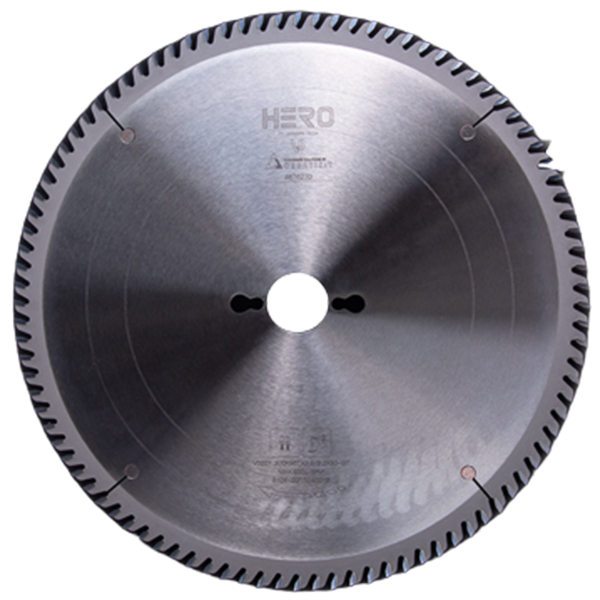 TCT Saw Blade
TCT Saw Blade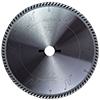 HERO Sizing Saw Blade
HERO Sizing Saw Blade HERO Panel Sizing Saw
HERO Panel Sizing Saw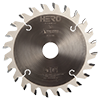 HERO Scoring Saw Blade
HERO Scoring Saw Blade HERO Solid Wood Saw Blade
HERO Solid Wood Saw Blade HERO Aluminum Saw
HERO Aluminum Saw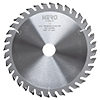 Grooving Saw
Grooving Saw Steel Profile Saw
Steel Profile Saw Edge Bander Saw
Edge Bander Saw Acrylic Saw
Acrylic Saw PCD Saw Blade
PCD Saw Blade PCD Sizing Saw Blade
PCD Sizing Saw Blade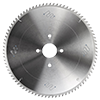 PCD Panel Sizing Saw
PCD Panel Sizing Saw PCD Scoring Saw Blade
PCD Scoring Saw Blade PCD Grooving Saw
PCD Grooving Saw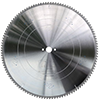 PCD Aluminum Saw
PCD Aluminum Saw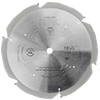 PCD Fiberboard Saw
PCD Fiberboard Saw Cold Saw for Metal
Cold Saw for Metal Cold Saw Blade for Ferrous Metal
Cold Saw Blade for Ferrous Metal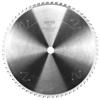 Dry Cut Saw Blade for Ferrous Metal
Dry Cut Saw Blade for Ferrous Metal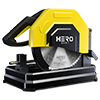 Cold Saw Machine
Cold Saw Machine Drill Bits
Drill Bits Dowel Drill Bits
Dowel Drill Bits Through Drill Bits
Through Drill Bits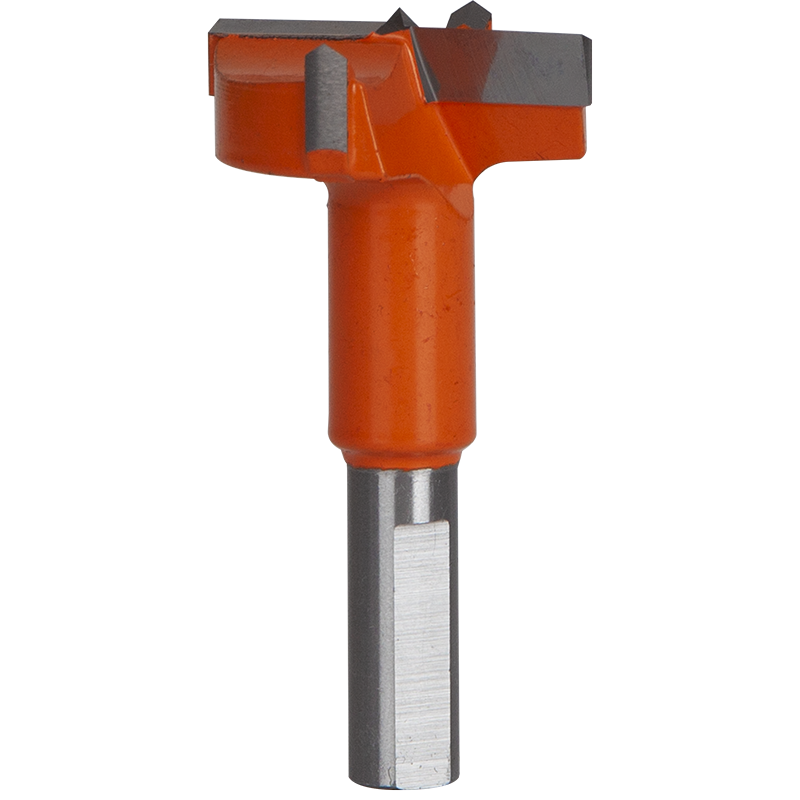 Hinge Drill Bits
Hinge Drill Bits TCT Step Drill Bits
TCT Step Drill Bits HSS Drill Bits/ Mortise Bits
HSS Drill Bits/ Mortise Bits Router Bits
Router Bits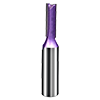 Straight Bits
Straight Bits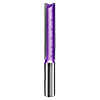 Longer Straight Bits
Longer Straight Bits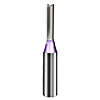 TCT Straight Bits
TCT Straight Bits M16 Straight Bits
M16 Straight Bits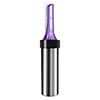 TCT X Straight Bits
TCT X Straight Bits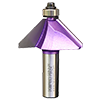 45 Degree Chamfer Bit
45 Degree Chamfer Bit Carving Bit
Carving Bit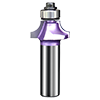 Corner Round Bit
Corner Round Bit PCD Router Bits
PCD Router Bits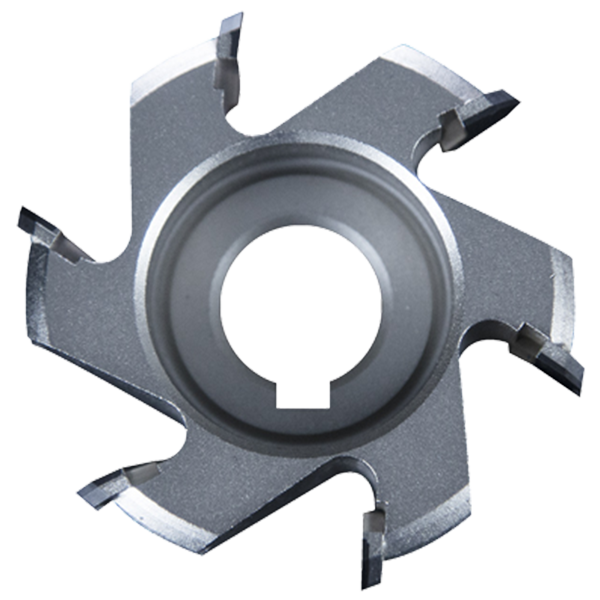 Edge Banding Tools
Edge Banding Tools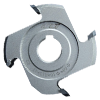 TCT Fine Trimming Cutter
TCT Fine Trimming Cutter TCT Pre Milling Cutter
TCT Pre Milling Cutter Edge Bander Saw
Edge Bander Saw PCD Fine Trimming Cutter
PCD Fine Trimming Cutter PCD Pre Milling Cutter
PCD Pre Milling Cutter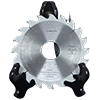 PCD Edge Bander Saw
PCD Edge Bander Saw Other Tools & Accessories
Other Tools & Accessories Drill Adapters
Drill Adapters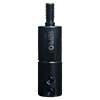 Drill Chucks
Drill Chucks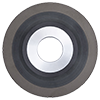 Diamond Sand Wheel
Diamond Sand Wheel Planer Knives
Planer Knives
